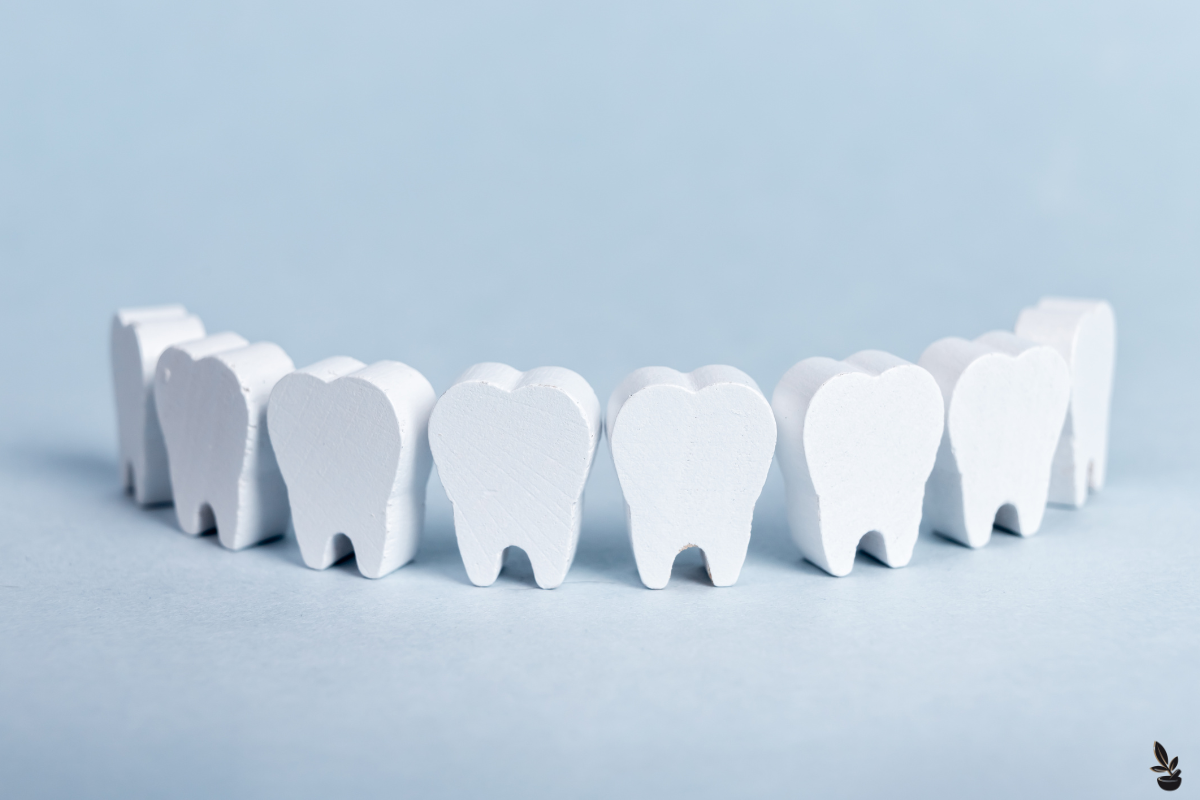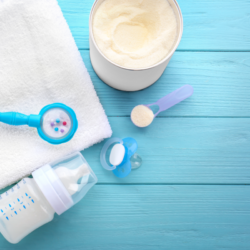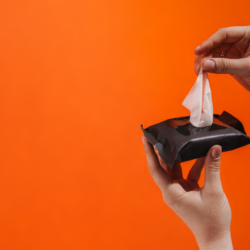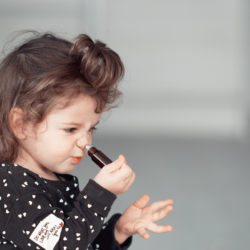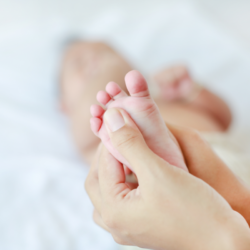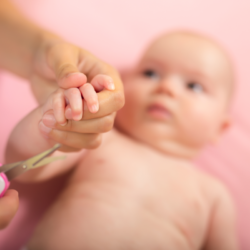Did you know that your baby’s teeth start to form during pregnancy? When your baby is born, the 20 primary teeth continue to develop under the gums. Then, between 3 and 7 months after birth, the first teeth break through the gums, a process known as teething. This can be a fairly uncomfortable time for the child and, of course, for the parents too. That’s why it’s important to know what to expect and how to relieve the discomfort of teething.
When does teething start?
For some children, teething can start as early as 3 months. But in most cases, teething starts when baby is between 4 and 7 months old.
The first teeth to appear are the 2 front incisors in the lower jaw. These are followed by the 4 incisors in the upper jaw, 4 to 8 weeks later. Then, after about 1 month, come the 2 lower lateral incisors, followed by the premolars. There will be a total of 4 on each jaw. These enable the baby to crush and chew food when it is between 12 and 19 months old.
The 4 upper and lower canines, the sharp teeth that help baby tear food apart, appear between 18 and 24 months. Last but not least are the upper and lower molars, when baby is between 20 and 33 months old.
By his birthday, your baby should have all 20 of his primary teeth, also known as baby teeth, fully formed.
Common symptoms of teething
Teething is an important stage in a child’s development, but it can also be a source of discomfort for the baby. Understanding the common symptoms can help parents to better comfort their child and ease the discomfort.
Irritability is often the first sign parents notice. The baby may seem more tearful than usual, with frequent cries that seem inconsolable by the usual methods. This irritability is usually due to the discomfort or pain caused by teeth cutting through the gums.
Swollen, red gums in the area where a tooth is about to emerge are another indicator. Parents may notice that their baby has a tendency to chew or chew on objects, or even their fingers, in an attempt to relieve the pressure under the gums.
Refusal to feed may also occur, as sucking can aggravate gum pain. This can be particularly evident in babies who are breast-fed or bottle-feeding.
Salivation is another common symptom. Excessive drooling, which can sometimes lead to erythema of the chin or chest due to constant dampness, is a natural reaction to teething.
How can I tell if my baby is teething?
Babies may also have trouble sleeping, waking up more often because of the discomfort caused by teething.
In some cases, teething may be accompanied by systemic symptoms such as low-grade fever and minor diarrhoea, although these symptoms are usually mild and should be monitored carefully to rule out other possible causes.
It’s important to note that every baby is unique and symptoms vary from child to child. Some may have multiple symptoms, while others may have only one or two.
Recent scientific literature suggests that it is essential to adopt an individualised approach to managing the baby’s pain and comfort during this period. The use of natural remedies, such as refrigerated teething rings, and consulting a paediatrician for appropriate medical interventions are strongly recommended to ensure the child’s well-being.
How can I recognise different types of crying and soothe a teething baby?
Teething is a key stage in a child’s development, but also a source of discomfort for the baby. It is crucial for parents and carers to be able to identify the child’s specific needs during this phase.
Recognising different types of cry is one of the most valuable skills that parents can develop. The crying associated with teething can be distinguished by its increased intensity and frequency. It is often accompanied by signs such as ear or cheek rubbing,restlessness or refusal to eat. Recent studies indicate that teething pain crying may be more acute and more difficult to soothe than other types of crying.
Various strategies can be used to soothe a teething baby. Physical contact, such as cuddling or carrying, offers comfort and security. The use of refrigerated teething toys can also provide relief thanks to the analgesic effect of the cold. In addition, teething gels with ingredients such as lidocaine or natural substances can be applied to the gums to alleviate pain, although they should be used with caution and on the advice of a healthcare professional, given the current debate about their safety.
Finally, it is essential to adopt an empathetic and patient approach, understanding that this is a temporary period and that each baby reacts differently. Emotional support is just as important as physical pain relief.
Parents are encouraged to consult recent scientific and medical sources to keep abreast of best practice and up-to-date recommendations in the field of child health.
How can you help your baby?
While there is no infallible treatment for teething, you can nevertheless give your baby some relief. The following tips will help to alleviate the minor temporary problems caused by the appearance of the first teeth:
- The first thing to do is comfort him with hugs and kisses without moderation.
- Gently massage baby’s gums with a clean finger. For greater effectiveness, you can apply a teething gel or gum gel. Hyalugel 1st Teeth mouth gel soothes the pain associated with gum inflammation, helps reduce swelling and promotes healing.
- Use cold. A cold spoon or refrigerated teething ring – not frozen – can be soothing on a baby’s gums. To avoid cavities, don’t dip these objects in sugary substances.
- Give your baby a rubber teething ring to chew on. MAM’s blue Phase 2 Mini Teething Ring will be your best ally. Specially designed for the back teeth of babies aged 4 months and over, it soothes and massages the gums. Make sure you sterilise it in boiling water or in the microwave before use.
What treatments should I avoid when teething?
When it comes to relieving the pain of teething, it’s important to choose the safest and most effective methods. However, certain common treatments can present risks to your child’s health. Here’s what to avoid:
Biscuits and teething foods
Depending on your baby’s age and experience with solids, foods should not be your first choice for teething relief. Babies under 9 months may not know how to handle certain foods, which can present a choking risk. What’s more, most of these teething biscuits and cookies aren’t very nutritious.
If you are introducing solid foods at the same time as your baby is teething, cold, soft foods – such as applesauce or bananas – can be good choices both nutritionally and for soothing irritated gums.
Topical medicines
It’s best to avoid these gel products to relieve teething for several reasons. The US Food and Drug Administration (FDA) warns against over-the-counter products containing benzocaine, for example, which have been linked to the potentially fatal blood disorder methaemoglobinaemia. And other ingredients in these products have an anaesthetic effect that can be dangerous in their own way.
Think about it: You apply anaesthetic gel to your baby’s irritated gums. He immediately touches it with his tongue. Now the tip of his tongue is numb. This increases the chances of him accidentally biting his tongue (ouch!). It also makes it harder for him to move food around in his mouth properly, which can lead to choking.
Teething necklaces and beads
Some people swear by teething necklaces with wood, amber, marble, silicone and other materials as an alternative treatment for teething pain. Manufacturers claim that some of these materials have analgesic properties that are absorbed into your baby’s skin to relieve teething symptoms. But the American Academy of Pediatrics advises against their use, saying that“the use of these necklaces is not supported by modern science“. In addition, beads and necklaces present a serious choking and strangulation hazard for babies and toddlers.
If you’re concerned that teething is causing your baby pain or preventing her from living her best baby life, talk to your paediatrician. They can help you understand what’s causing your baby discomfort so you can find safe and effective relief.
How do I look after my baby’s new teeth?
Wipe your baby’s gums with a soft, clean cloth twice a day – after the morning feed and before bedtime. This cleaning will remove any food debris and bacteria that may have accumulated in your baby’s mouth.
When your baby’s first teeth appear, use a soft toothbrush to clean twice a day. Until your child learns to spit up – around the age of 3 – use a trace of fluoride toothpaste the size of a grain of rice. Then switch to a pea-sized dab of toothpaste as your child approaches 2 to 3 years of age.
It’s also time to think about regular dental check-ups. The American Dental Association and the American Academy of Pediatric Dentistry recommend scheduling a child’s first dental visit around their first birthday.
Remember, regular dental care during childhood helps lay the foundations for a lifetime of optimal oral health.

